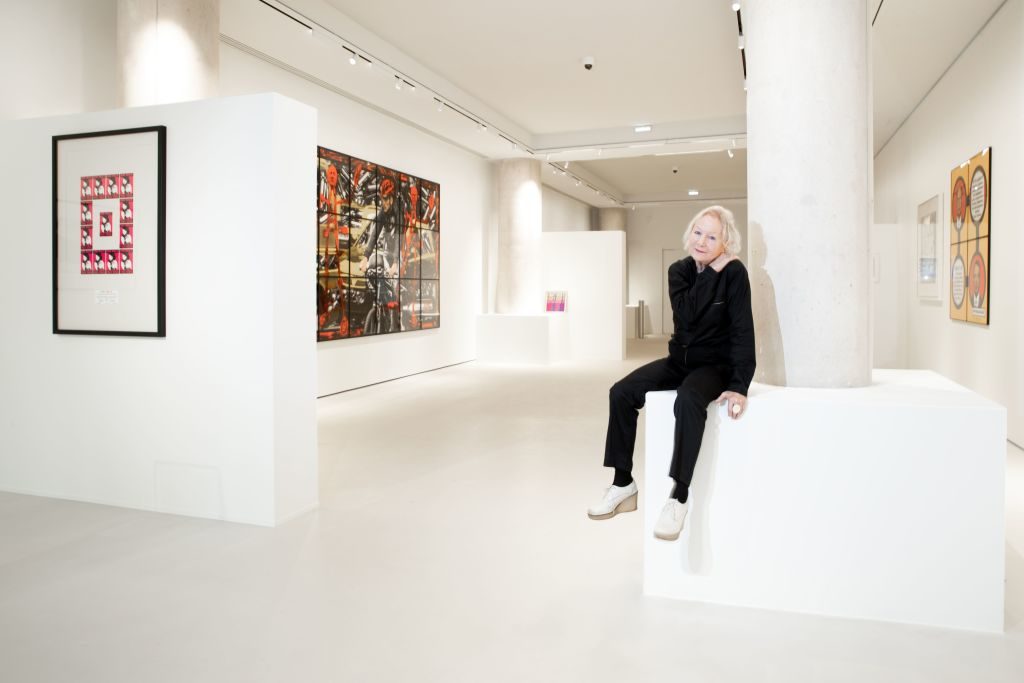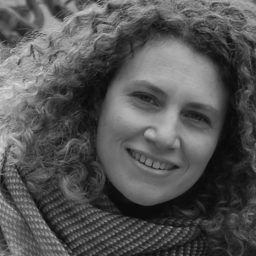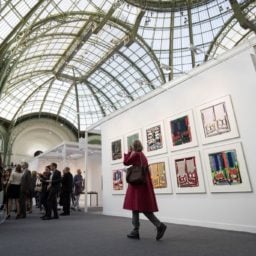In a black jumpsuit, her hair roughly pinned up with delicate white flowers made of fabric, Agnès Troublé—the French designer, art collector, film patron, and philanthropist better known as Agnès b.—took a deep breath of satisfaction. A glass of champagne in hand, she looked around her new art space, La Fab, as it opened its doors to the public last weekend in Paris.
“Not bad! Now that I see it, I’m happy,” says the fashion icon, who dressed stars like David Bowie for years and invented the famous “snap cardigan” as part of her eponymous clothing line, which has come to epitomize effortless Parisian chic.
But despite her cult status and the international success of her brand, Agnès, as she is called by her loyal following, has never felt bound to the fashion world’s elitist bubble (she doesn’t like going to other fashion shows). The same is true of her attitude toward the art world.

View of La Fab.’s facade. © Rebecca Fanuele.
As private art foundations and museums designed by starchitects continue to pop up in France—this spring, the Pinault Collection museum opens in the center of Paris, and LUMA, Arles’s contemporary art center, continues its gradual opening in the south of France in a crystal-like tower by Frank Gehry—Agnès has taken a decidedly different tack.
Her new art space sprawls across the first two floors of a multi-use building that also hosts a daycare and 75 apartments designated for low-income families and disabled people. “I didn’t want to be in a rich area; I love the more working-class side because I like to be a frontier-er,” she explains in slightly broken English, referencing the French word for border. “To be part of it, but still staying outside.”
The complex, which was built in 2017, is in a neighborhood known for its modernist and experimental architecture on the eastern side of the city in the 13th arrondissement, not far from the Seine’s industrial ports. With a rippling façade broken up by pops of square block terraces, La Fab is, miraculously, located on a square called Place Jean-Michel Basquiat, named after the artist who is both central to Agnès’s collection and an old friend. It’s little wonder that Agnès didn’t hesitate when she first laid eyes on the venue.
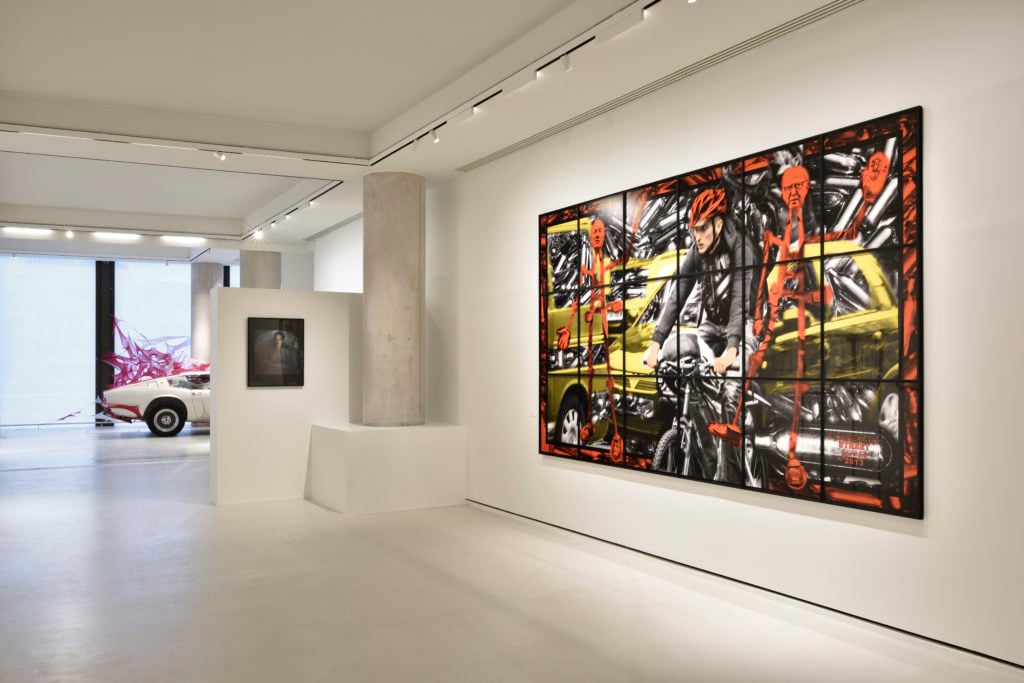
Exhibition view of “La hardiesse.” © Rebecca Fanuele. La Fab. / collection agnès b., 2020.
The 1,400-square-meter (or 15,000-square-foot) columned gallery space will showcase exhibitions every three to four months that present rotating selections of the designer’s collection of more than 5,000 works by artists including Warhol, Man Ray, Nan Goldin, Gilbert & George, and Keith Haring. Many of the pieces on view are by established names who started out as friends of the designer, punctuated by the work of emerging and younger figures such as Parisian artist Thibaut Bouedjoro or French-born, LA-based painter Claire Tabouret.
“I made the collection by acquiring pieces by young, unknown artists—I never bought a Jeff Koons for $3 million,” Agnès says. “When I bought the Basquiat drawing,” she adds, gesturing to a self-portrait in the inaugural exhibition, “it wasn’t expensive at all; I got it from his studio at the time, because of one piece I had seen in Paris. That’s why I wanted to know more about him, and we met later.”
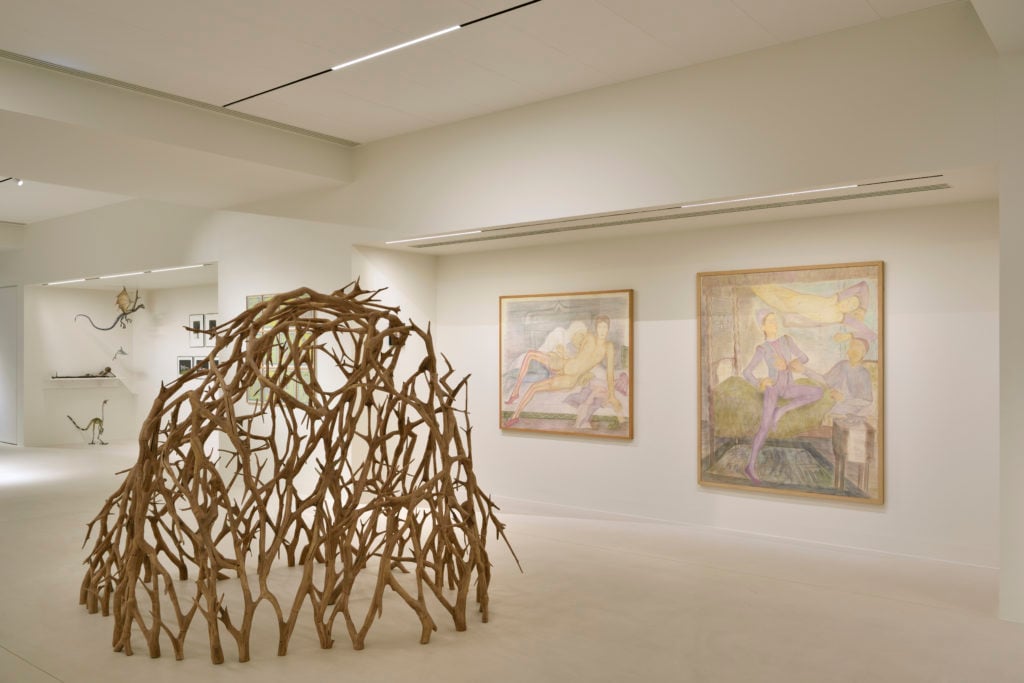
Exhibition view of “La hardiesse.” © Rebecca Fanuele. La Fab. / collection agnès b., 2020.
Though officials declined to disclose the exact cost of La Fab, the venue’s manager Sébastien Ruiz says the price tag was “very reasonable for the amount of space involved.” Originally designed to be used as a retail space, its large storefront windows had to be covered using shades to protect the artworks from sun damage. The 13th arrondissement’s mayor Jérôme Coumet expressed relief that the space had been turned into an arts institution and not an outlet for a ready-to-wear chain, as the developers had originally planned. “Until just a few years ago, our district had a lot of artists but very few cultural spaces,” Coumet notes.
In addition to showcasing her private collection, La Fab also houses many other projects the designer has spearheaded over the decades. Navigating among her interests in fashion, design, art, and social activism seems to fuel her seemingly endless creative drive. In addition to the exhibition space, La Fab hosts Agnès’s commercial gallery, the galerie du jour, which she founded in 1984 (“everything is for sale,” she notes—including the furniture). There’s also a bookstore, as well as offices for her philanthropic arm, which she takes pains to clarify receives no public financial support.
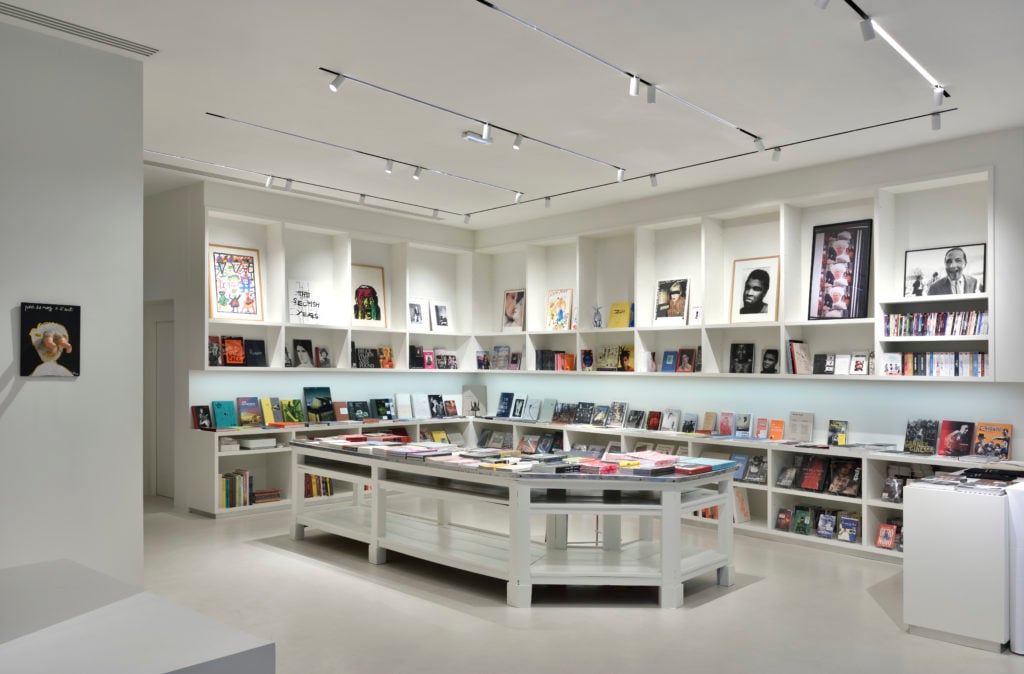
Bookstore at La Fab. © Rebecca Fanuele. La Fab. / collection agnès b., 2020.
“It’s not a foundation that takes money from the state and creates tax deductions,” she says. “I think rich people need to pay their taxes normally because, if they did, the world would be better. Too few people keep all the money in the world; it’s unfair. That’s why I like to share.” Here, she is referring to La Fab’s upstairs residents: the building’s tenants have a permanent free pass to La Fab and its planned film screenings and conferences to be held in cultural venues nearby. Other visitors pay somewhere between €3 and €7 ($3.30 to $8).
For her first exhibition, which the fashion designer put together herself—her childhood dream was to be a museum curator—Agnès chose the theme “La Hardiesse,” the French word for boldness. Walking through this first exhibition, which includes a touch of street art alongside blue-chip names like Basquiat and Gilbert & George, she stops frequently with her nose a few inches from an artwork and discusses it as though it were a living creature she has cared for. “All this was in my mind, but to see it on the wall and the pieces combined together, telling something—it’s like writing a story with others’ works of art,” she says. “It’s great for me.”
Does the word “boldness” describe her? “I don’t know,” she says. “It must. I like the idea of doubt in that word. It’s about not being sure and trying to do something, even if you are not sure,” she said. “Doubting a little means you have to think.”
La Fab is located at Place Jean-Michel Basquiat, 75013 in Paris.
